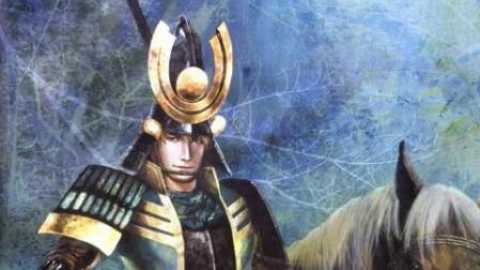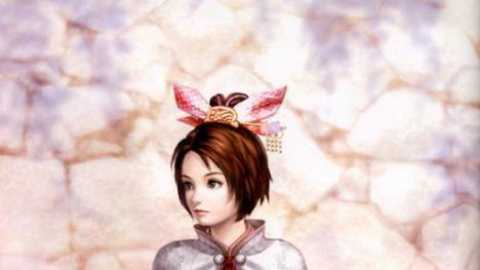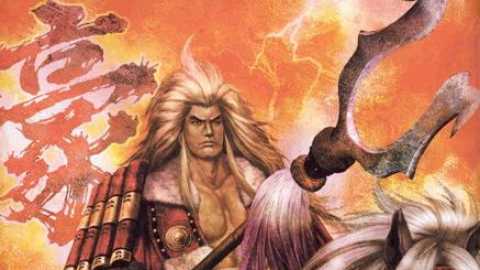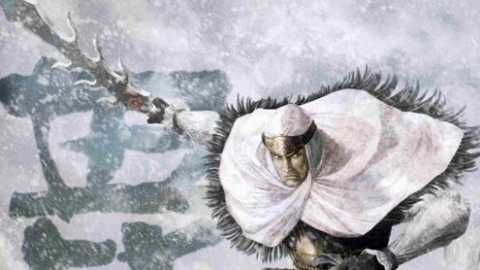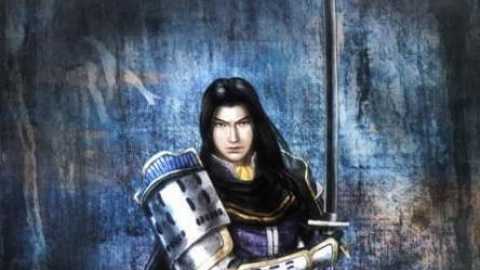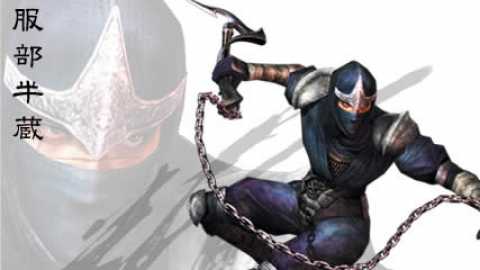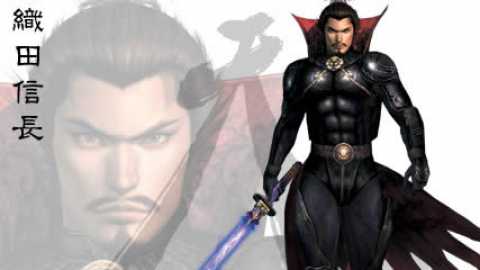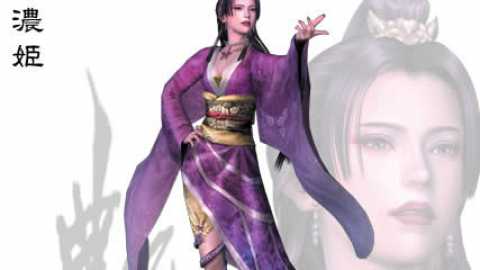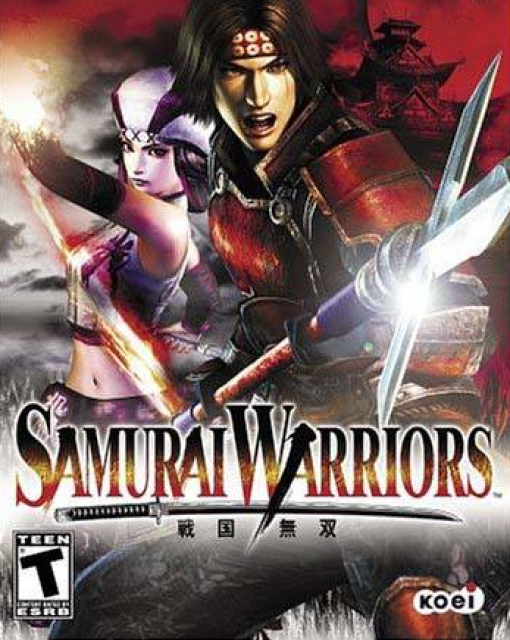Overview
Samurai Warriors is an offshoot of Koei's Dynasty Warriors series of action games. As in Dynasty Warriors, the basic gameplay consists of the player selecting a character from a roster of highly stylized figures from the Warring States era of Japan and fighting through stages loosely based around important historical battles. The game's basic objective is to reach the end of each character's story mode.
Differences from Dynasty Warriors
As a spin-off, most of the core gameplay of Samurai Warriors is taken directly from its parent series, but the game did introduce a number of tweaks to the gameplay and presentation that differentiate it. Some of these changes include:
- A more organized mission structure. Over the course of a stage, the player is given specific mission objectives, but not all of them are mandatory to complete a stage, and some missions offer the player branching choices, such as choosing to help one side in a conflict in favor of another.
- Branching story paths. During the course of each character's story mode, there comes a point at which the path with branch in two directions, each leading to a different endgame and story resolution. The path taken by the player is determined by whether or not they fulfilled certain requirements during the branching mission.
- An active experience point system. Unlike the PS2 era Dynasty Warriors games, in which the characters rank up at a battle's conclusion based on points earned for the number of enemies and officers defeated and the time it took to complete the stage, Samurai Warriors employs an experience point system that allows the player character to level up and receive stat increases in mid-battle. Experience points are earned by defeating enemy soldiers and officers as well as by completing mission objectives.
- A skill advancement system. As characters fight, they earn points that can be used to further enhance skills based on attributes such as attack power, defense, and the amount of health regained from consuming healing items.
- Projectile deflection. The player can deflect arrows back at the archers that fire them with well-timed attacks.
- Ninja double-jump. The ninja characters Hanzo and Kunoichi can both double-jump to access pathways that the other characters can't reach.
- Firearms. While most of the characters are able to use bows as a secondary weapon, Magoichi fires bullets using his rifle, and Goemon wields a cannon that's strapped to his back. Their choice of weapons come into play during their respective story modes; Magoichi must attempt to snipe from a vantage point using his rifle, while Goemon will get in trouble at one point if he fires off his cannon while in a secure palace.
The game also features extra modes not seen in the Dynasty Warriors games that predated it.
- Character creation. The player can create a new character by selecting a premade character model, giving it a name, and progressing through a series of training challenges. The new characters stats and abilities are based on the challenges chosen and the player's performance in each. After the challenges are complete, the player must then take challenges presented by one of the samurai clans represented in the game. Passing the clan challenges completes the character creation process, but if the player fails to score high enough, the character cannot be created and the player must try again from the start.
- Survival Mode. The game presents a survival mode set in a tower, in which the ultimate goal is to survive long enough to make it to the top. Players that make it all the way to the top floor will face the Dynasty Warriors character Lu Bu in a special battle and complete the survival challenge if he is defeated. Along the way, the player will face special challenges every few floors, such as defeating a specific character in combat or solving a simple puzzle.
Playable Characters
There are fifteen playable characters in Samurai Warriors. The majority of the roster is based on actual figures of the era, though they are also heavily stylized and reinterpreted for the purposes of the game.
Yukimura Sanada
Weapon: Spear
A samurai of the Takeda clan. He is depicted as a fierce warrior that will fight on no matter how the odds are stacked against him.
Nobunaga Oda
Weapon: Straight sword
The leader of the Oda clan. In the Samurai Warriors games, he is depicted in a dark, evil manner, though not entirely unsympathetic. Numerous characters' story modes include a stage entitled "Incident at Honnoji," where they must either assist Nobunaga in his escape from Mitsuhide's assassination plot or attempt to finish him off.
Oichi
Weapon: Kendama (A Japanese cup-and-ball toy)
Nobunaga's younger sister. In Samurai Warriors, she's depicted as a young, childish teenager, but she reappears in Samurai Warriors 2 as an older and more mature adult.
Mitsuhide Akechi
Weapon: Katana
Vassal of Nobunaga that leads a coup to assassinate him.
Noh
Weapon: Claws
Nobunaga's wife. The game depicts her as having promised her father to take Nobunaga's life.
Goemon Ishikawa
Weapon: Metal club/Cannon
A ninja and thief depicted as being rather oafish.
Keiji Maeda
Weapon: Spear
Originally served under Nobunaga before wandering off in search of other battles.
Ranmaru Mori
Weapon: Nodachi
A young servant of Nobunaga. He was said to have had a pretty appearance, and thus his physical appearance in the game is extremely feminine. His Japanese and English voices are both provided by women.
Shingen Takeda
Weapon: War fan
Leader of the Takeda clan. Historically, he dies while traveling to Kyoto with his army, but he avoids this fate during hist story mode in the game.
Okuni
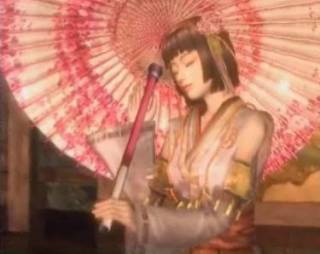
Weapon: Umbrella
A miko in search of funding for her shrine. She is based loosely on a woman historically credited with creating the kabuki form of theatrical dance. Her umbrella can be opened in mid-jump to allow her to glide past enemies and obstacles.
Hanzo Hattori
Weapon: Chained sickle
A ninja in the service of Ieyasu Tokugawa. The game depicts him as being the one that kills Shingen Takeda.
Kenshin Uesugi
Weapon: Seven-branched sword
Warlord and rival of Shingen Takeda. In the game, he considers Takeda his nemesis.
Magoich Saika
Weapon: Rifle
Leader of a mercenary group that was annihilated by Nobunaga. In his story mode, he attempts to assassinate Nobunaga out of revenge. The game also comically depicts him as a womanizer.
Masamune Date
Weapon: Wooden swords
The young leader of the Date clan. He is depicted as being extremely brash and arrogant, frequently referring to his enemies as idiots.
Kunoichi
Weapon: Kunai
The only playable character in the game not bsed on an actual historical figure. "Kunoichi" is the Japanese term for a female ninja. She is depicted as an ally of Yukimura Sanada in the game.

 PlayStation 2
PlayStation 2 Xbox
Xbox



